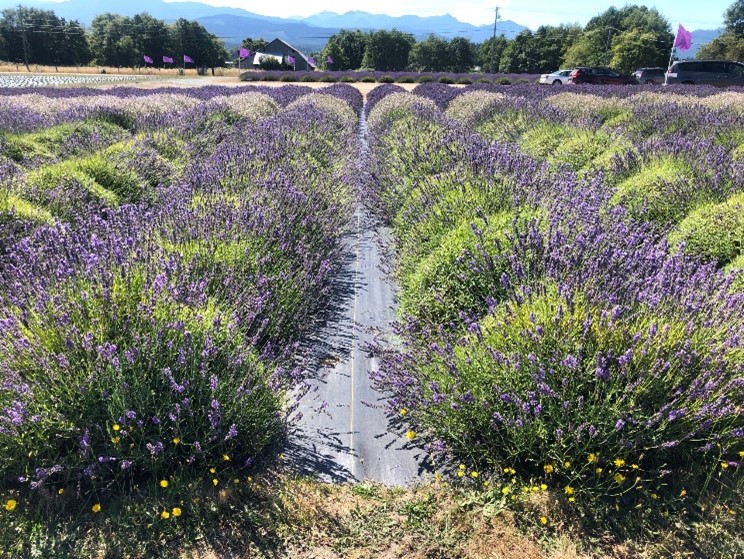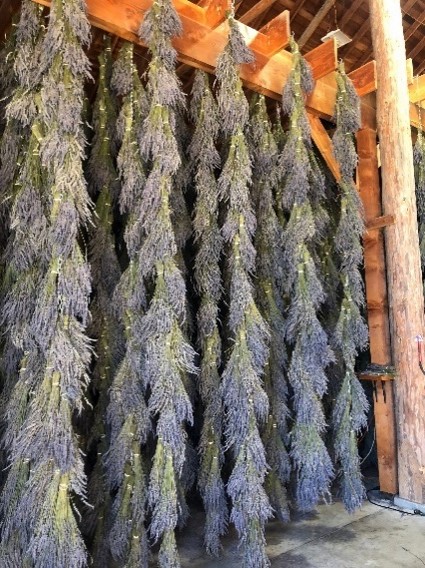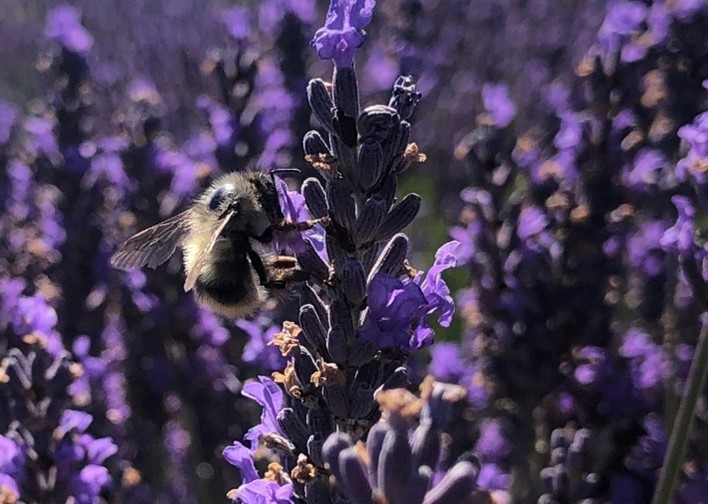From the Hort Desk – A Trip to the Lavender Farm
- 2022-09-04
- By mkirk
- Posted in Horticulture, The Garden Buzz
By Lisa Mason, CSU Extension Horticulture Agent
I traveled to the State of Washington last week to visit Olympic National Park and drove through Sequim, WA (pronounced “Squim”). Located along the northern coast of the Olympic Peninsula, this town is famous for the Sequim Lavender Experience, an agritourist co-op of small, family-owned lavender farms.
I toured one of the lavender farms, and as soon as I stepped out of the car, the first thing I noticed was the light, fresh scent of lavender in the air. The farm had approximately 12 acres of lavender fields comprising varieties of purple and white. When looking at the flowers up close, we heard the constant sound of buzzing from honey bees and bumble bees hard at work pollinating the flowers.

After visiting the fields, we toured inside the barn where they harvest, dry, and process the lavender. The barn consisted of bundles hanging to dry from the floor to the ceiling. They were also steam distilling lavender to make essential oil and creating bundles of dried lavender to sell. On this farm, they use 20-25 lbs. of lavender to fill a 60-liter still which produces 225-300 milliliters of essential oil from “Grosso,” a variety of lavender that produces more oil than other varieties (B&B Family Lavender Farm, 2021).


Drying and harvesting lavender, Photos: Lisa Mason
Visiting the farm provided me an entirely new appreciation for this multi-use plant and served as a great reminder that lavender is an excellent perennial plant to grow in Colorado!
Lavender is a plant in the Lavendula genus in the Lamiaceae plant family, also known as the mint family. Lamiaceae plants are easily identified because most have square stems. Many of the plants are herbaceous, have opposite leaves, and whorled spikes. Leaves and flowers tend to be fragrant. The genus Lavendula has about 45 plant species and more than 450 varieties (UT Institute of Agriculture, 2022). Lavender is native to Europe, specifically the Mediterranean area.
English lavender (Lavandula angustifolia) is an excellent species to grow in Colorado. A wide variety of cultivars are available that differ in size and shades of violet and white. Lavandin plants are another excellent option for Colorado. Lavandins are a hybrid between two lavender species: Lavandula angustifolia and Lavandula latifolia. Essential oils can be extracted from any lavender plant, but lavandin plants tend to yield higher amounts of oil.

Lavandins and English lavender grow well in USDA Hardiness Zones 5-7. They grow best in full sun and in alkaline and well-draining soils. Once established, lavender can be a great drought-tolerant, and pollinator friendly plant attracting bumble bees and honey bees. Generally, they do not have any pest problems. Refer to Table 1 to learn more about cultivars.
To learn more about planting, growing, and harvesting lavender, check out the following links:
Horticulture Resources
- Garden Buzz Archives
- CSU Extension Resources
- Colorado Master Gardener Program
- Foothills to Plains Native Plant Master Program
- Native Bee Watch Community Science Program
- The Co-Hort Blog
- PlantTalk Colorado
- Soil Testing
- Plant Select
- Emerald Ash Borer
- Japanese Beetle
- Colorado State Forest Service
- Ask an Expert


